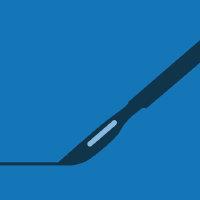Topic Menu
► Topic MenuTopic Editors

Regenerative Surgery: Clinical, In vitro and Instrumental Analysis
Topic Information
Dear Colleagues,
Regenerating damaged tissues, an act that once was considered magic, is currently entrusted to the surgeons who have allowed us to move from replacement and reconstructive plastic surgery to regenerative plastic surgery, through autologous and allogeneic cell-based therapies and growth factors. The enthusiasm for regenerative plastic surgery and for the treatment of some pathologies addressed by it, such as the outcomes of breast cancer, hemifacial atrophy, burns, scars, and aesthetic improvements such as breast and buttock augmentation, face rejuvenation, and hair regrowth, has led the editors of this regenerative surgery topic to investigate the possible new minimally invasive strategies based on adipose-derived stem cells, human follicle stem cells, and growth factors contained in platelet-rich plasma, across all the regenerative fields. The present regenerative surgery topic aims to report on the latest knowledge in the regenerative field, including the treatment of soft-, bone-, and cartilage-tissue defects, hair loss, and wound healing. Therefore, the goal of this topic is to introduce and definitively establish this new and interesting field of plastic surgery, called regenerative plastic surgery.
Dr. Pietro Gentile
Dr. Aris Sterodimas
Topic Editors
Keywords
- regenerative plastic surgery
- adipose-derived mesenchymal stem cells
- fat grafting
- platelet-rich plasma
- growth factors
- mesenchymal stem cells
- biomaterials
- hair loss
- androgenetic alopecia
- soft/bone/cartilage tissues defects
- regenerative surgery
Participating Journals
| Journal Name | Impact Factor | CiteScore | Launched Year | First Decision (median) | APC |
|---|---|---|---|---|---|

Biomedicines
|
4.7 | 3.7 | 2013 | 15.4 Days | CHF 2600 |

International Journal of Molecular Sciences
|
5.6 | 7.8 | 2000 | 16.3 Days | CHF 2900 |

Journal of Clinical Medicine
|
3.9 | 5.4 | 2012 | 17.9 Days | CHF 2600 |

Surgeries
|
- | - | 2020 | 24.9 Days | CHF 1200 |

MDPI Topics is cooperating with Preprints.org and has built a direct connection between MDPI journals and Preprints.org. Authors are encouraged to enjoy the benefits by posting a preprint at Preprints.org prior to publication:
- Immediately share your ideas ahead of publication and establish your research priority;
- Protect your idea from being stolen with this time-stamped preprint article;
- Enhance the exposure and impact of your research;
- Receive feedback from your peers in advance;
- Have it indexed in Web of Science (Preprint Citation Index), Google Scholar, Crossref, SHARE, PrePubMed, Scilit and Europe PMC.


